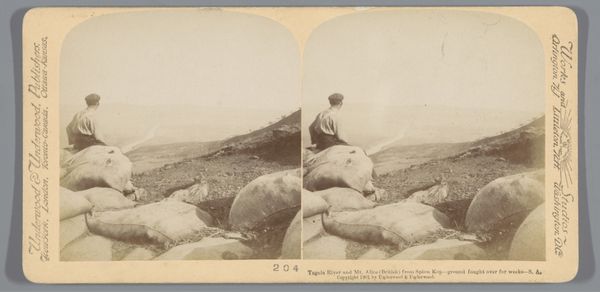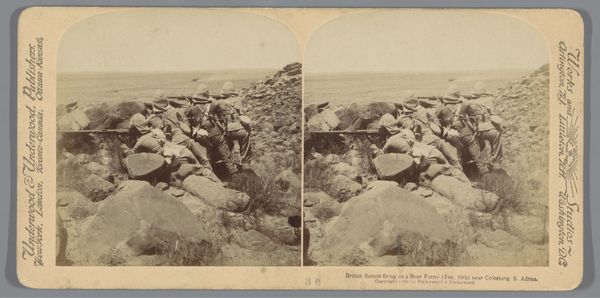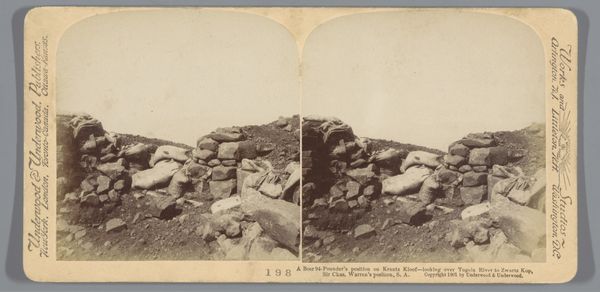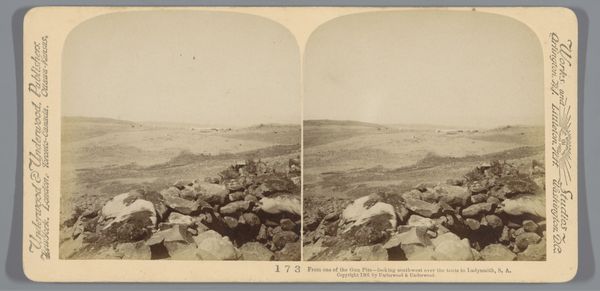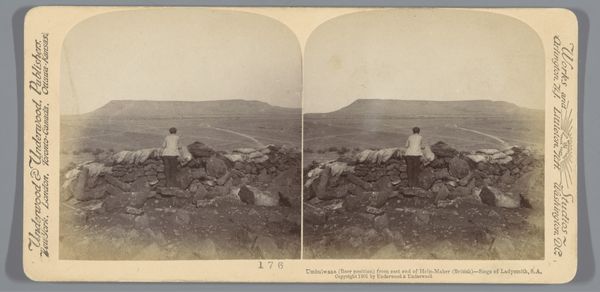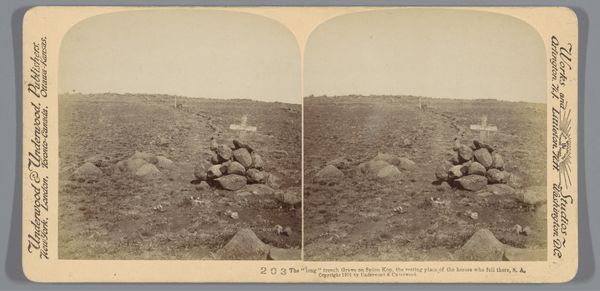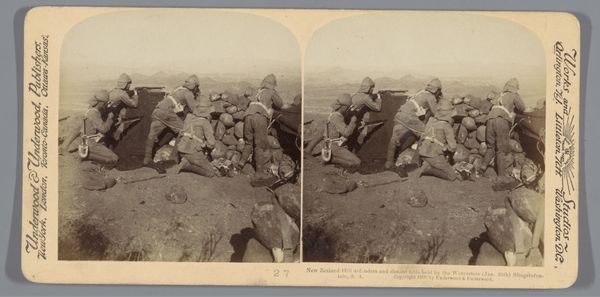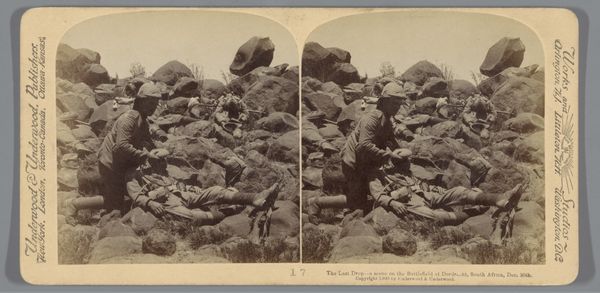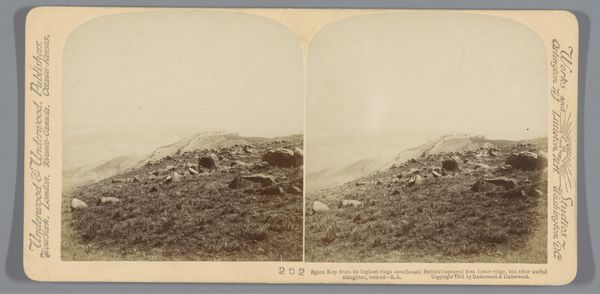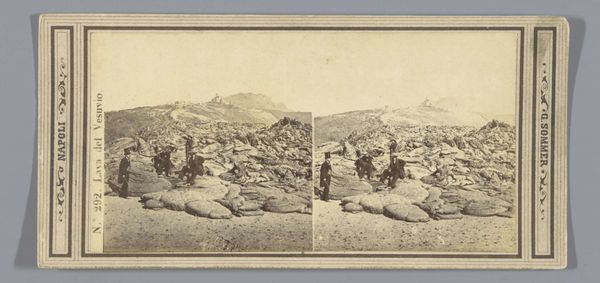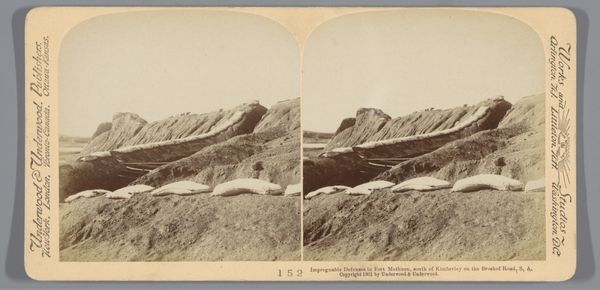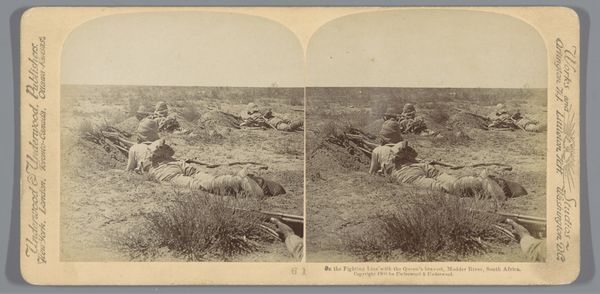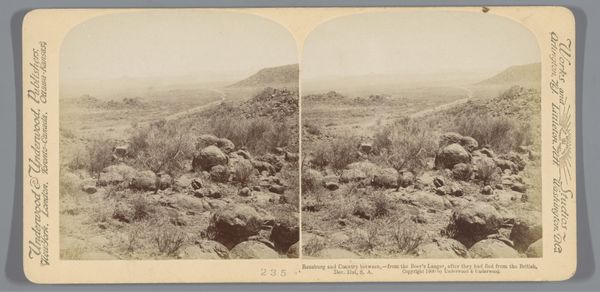
Gezicht op de Tugelarivier en Zwartkop vanachter zandzakken op Spionkop, de plek waar Redvers Buller vocht tijdens de Tweede Boerenoorlog 1901
0:00
0:00
print, photography, photomontage, gelatin-silver-print
# print
#
landscape
#
river
#
photography
#
photomontage
#
gelatin-silver-print
Dimensions: height 88 mm, width 178 mm
Copyright: Rijks Museum: Open Domain
Curator: Here we have a gelatin silver print from 1901 by Underwood & Underwood, titled "View of the Tugela River and Zwartkop from behind sandbags on Spionkop, the place where Redvers Buller fought during the Second Boer War." Editor: Stark and strangely muted. The pale, almost monochromatic tones create a sense of desolation, despite the suggestion of landscape in the background. It feels immediate, as though captured right in the thick of the action. Curator: The print gives us a fascinating view into the methods and priorities of war photography at the time. It's a stereo photograph, printed in duplicate, made for viewing with a stereoscope to give a 3-dimensional effect. Mass produced and widely distributed, prints like this served as both reportage and a kind of historical record. Editor: Interesting—notice how the repetitive use of those sandbags creates an almost abstract pattern. They appear simultaneously solid and yielding. There’s something fundamentally contradictory about it all. The horizon line seems purposefully obscured, trapping our gaze within the immediate foreground. Curator: And thinking about what that foreground *is*—a hasty barricade constructed from earth and sandbags—tells us about the conditions of this colonial war. It suggests a level of protracted engagement, manual labour, the material reality of combat. It's important to consider the context of consumption, too. This image would have circulated back in the US, furthering a kind of imperial worldview. Editor: True, yet formally the texture contrast is captivating—the rough, almost granular quality of the earth against the relatively smooth surface of the stacked bags. Curator: Absolutely. Considering that such landscapes are never truly empty. It captures a specific moment but stands in for all those points of contact, resource extraction and human life involved in colonial conflict. Editor: Perhaps its success lies precisely in this tension, in this layering of visual cues— between presence and absence, reality and construction. Curator: Yes. This small print condenses complex socio-political concerns down to a material object. It invites us to consider those processes of production and their wider impact. Editor: And the artistry involved in manipulating the tonal values creates an overall feeling of suspense. Its lasting impact stems, at least in part, from this formal ambiguity.
Comments
No comments
Be the first to comment and join the conversation on the ultimate creative platform.
